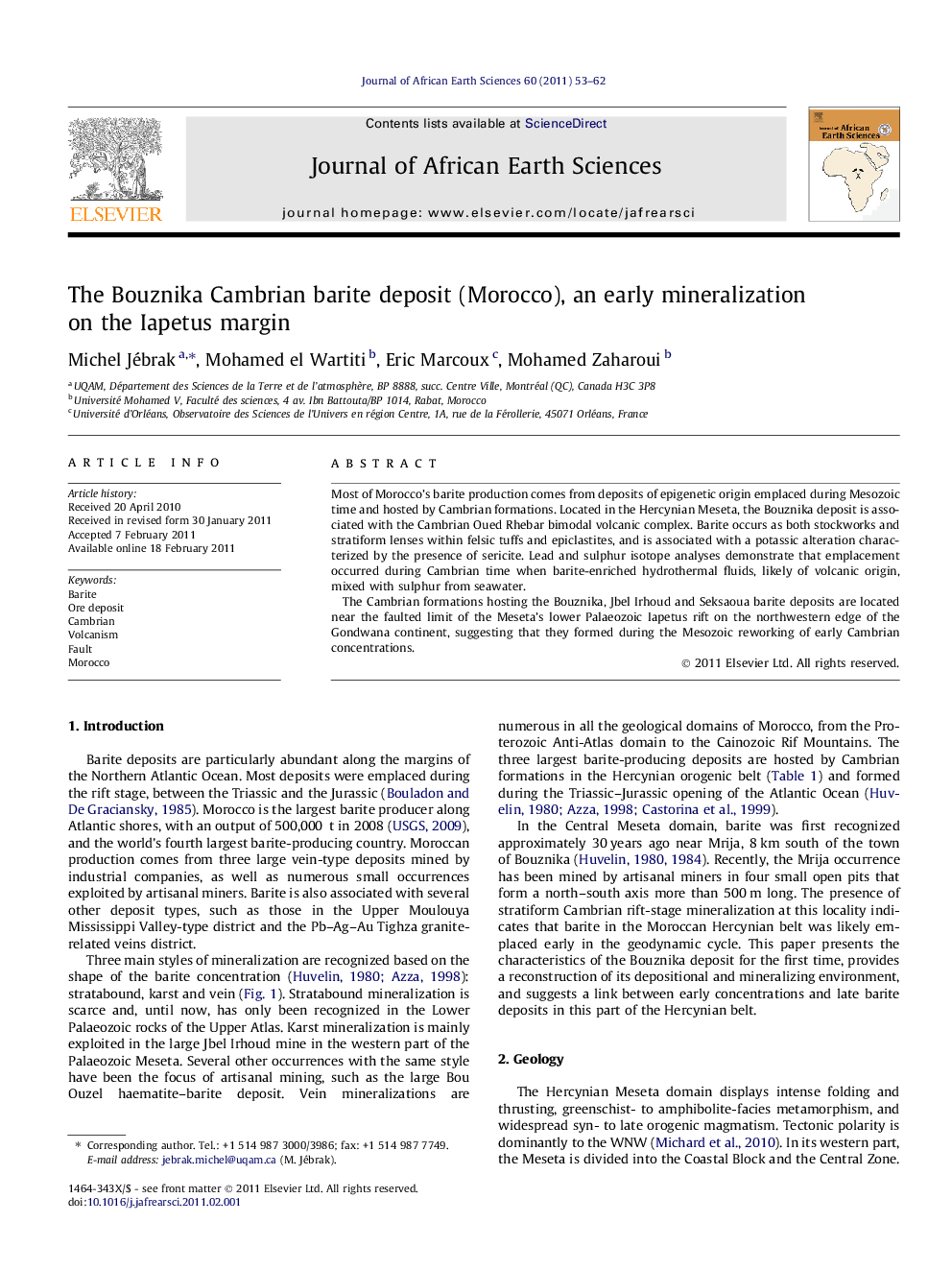| Article ID | Journal | Published Year | Pages | File Type |
|---|---|---|---|---|
| 4729179 | Journal of African Earth Sciences | 2011 | 10 Pages |
Most of Morocco’s barite production comes from deposits of epigenetic origin emplaced during Mesozoic time and hosted by Cambrian formations. Located in the Hercynian Meseta, the Bouznika deposit is associated with the Cambrian Oued Rhebar bimodal volcanic complex. Barite occurs as both stockworks and stratiform lenses within felsic tuffs and epiclastites, and is associated with a potassic alteration characterized by the presence of sericite. Lead and sulphur isotope analyses demonstrate that emplacement occurred during Cambrian time when barite-enriched hydrothermal fluids, likely of volcanic origin, mixed with sulphur from seawater.The Cambrian formations hosting the Bouznika, Jbel Irhoud and Seksaoua barite deposits are located near the faulted limit of the Meseta’s lower Palaeozoic Iapetus rift on the northwestern edge of the Gondwana continent, suggesting that they formed during the Mesozoic reworking of early Cambrian concentrations.
Research highlights► New style of volcanic-hosted barite mineralization in the Cambrian margin of Iapetus. ► Regional controls of barite deposits in Cambrian terranes of Morocco. ► Origin of high K in tholeiitic bi-modal volcanism of the Iapetus passive margin.
